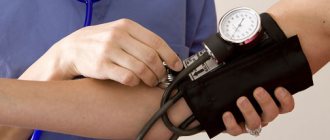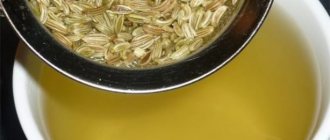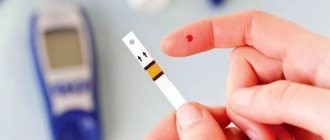Diabetes mellitus is an irreversible pathology characterized by persistently elevated blood glucose levels. The occurrence of the disease is caused by a failure of the intrasecretory function of the pancreas and a disruption of metabolic processes. Diabetics are prescribed medication and diet therapy for life.
Proper catering involves separating foods and drinks into three categories: prohibited, permitted and limited. The latter includes food that can be consumed in a limited manner, based on the level of glycemia and overall well-being. The main criteria for choosing each product for a diabetic table are the glycemic index (GI) and energy value.
Reference: GI is an indicator of the rate of glucose formation and the speed of its absorption into the bloodstream. Foods with a high GI (⩾ 70 units) are not included in the diet of diabetics. Products indexed from 30 to 70 are considered limited. The basis of diabetic nutrition is drinks and dishes with an index of ⩽ 30 units. Before drinking beer if you have diabetes or consuming other alcoholic beverages, you need to find out how safe it is for your health.
Strong and weak alcohol for diabetes
Vodka, cognac and other drinks contain more than 40% ethanol and are practically devoid of sugar. The glycemic index of these liquids is zero, so their consumption does not cause an increase in sugar levels. In the first hours after drinking, strong alcohol can lower blood sugar levels.
The danger is the correlation of strong alcohol with the drug therapy that the patient receives (insulin injections for type 1 diabetes, and hypoglycemic tablets for type 2 of the disease). With excessive consumption of forty-degree drinks, the risk of developing a hypoglycemic crisis (critical decrease in glucose), accompanied by severe intoxication, progresses.
The next negative aspect of “breastfeeding” is the high calorie content of strong alcohol. The energy value of vodka is 235 kcal/100 g, cognac – 240 kcal/100 g. This is especially true for type 2 diabetics who are overweight. Wines are low-alcohol drinks. They are not as rich in calories as cognac and vodka. Different types of wine contain, on average, from 60 to 80 kcal.
Sweet and sparkling wines are excluded for diabetes
Their glycemic index corresponds to the average, that is, for diabetes, they are limited products. Red blended wine with an alcohol content of 9–13% vol. and sugar content of up to 3 g/l is permitted as a prophylactic against atherosclerosis. For diabetics, the main condition is to comply with a single dose - no more than 200 ml (one glass). Beer, like wine, is listed in the low-alcohol category, but the answer to the question of whether beer can be consumed if you have diagnosed diabetes is not so clear-cut.
Important! Ideally, diabetics should avoid drinking alcoholic beverages altogether.
But if you really want
If you have an irresistible desire to drink or under a combination of circumstances when it is extremely difficult to give up drinking, you must be guided by the following tactics - choose the lesser of two evils. To quickly figure out which drinks should be completely excluded and which can still be consumed in small quantities, the following factors must be taken into account:
- Strength of the drink. Fluctuations in blood glucose directly depend on the strength.
- The amount of sugars in the drink. Many drinks contain quite a lot of sugars, especially wines and liqueurs.
- Calorie content of booze. Many diabetics are overweight, and most alcoholic drinks are high in calories.
If you allow drinking alcohol with such a complex endocrine disease, then preference should be given to the following drinks.
- Wines based on natural grapes. Dry or semi-dry wine made from dark grape varieties is best tolerated by the body. You should not drink more than 200 ml of wine at one time.
- Strong alcoholic drinks such as fortified wine, vermouth, cognac, whiskey and vodka. This drink lowers blood sugar.
Wine made from dark grape varieties is the best choice for diabetes
Characteristics of beer and its effect on the body
Beer contains no fats, the protein component is scanty (only half a gram per 100 g), but it contains a sufficient amount of vitamins and minerals. The leading positions are occupied by:
- choline (vitamin B4) – takes an active part in metabolic processes;
- folic acid (B9) – helps accelerate tissue regeneration;
- fluoride – maintains the health of tooth enamel;
- potassium – regulates water balance and stabilizes cardiac activity;
- phosphorus – stimulates the functioning of the brain and muscles, participates in metabolic processes.
According to nutritionists, for a healthy person, drinking beer in small quantities is not only not dangerous, but also beneficial. When you have diabetes, not everything is so rosy. The energy value of the foamy drink, depending on the variety, ranges from 45 to 60 kcal per 100 ml. With a simple comparison of calorie content, a half-liter bottle of beer can be equated to a full-fledged cheeseburger, which is unacceptable under diabetic dietary restrictions.
The percentage of alcohol in beer is small, different varieties contain from 3.5 to 5.5%. The alcohol component is formed through the fermentation of brewer's yeast and sugars, in particular glucose. During a chemical reaction, molecules break down, releasing ethanol and carbon dioxide, which turns beer into a carbonated liquid, dangerous for people with diabetes. First, soda speeds up the penetration of alcohol and glucose into the bloodstream. Secondly, it promotes the manifestation of polyphagia (increased appetite). It is not always possible for a person to resist the desire to snack heavily. This leads to a set of extra pounds that are unacceptable for diabetics.
Does drinking beer increase blood sugar? Undoubtedly. The glycemic index of the drink reaches 110 units. Considering that diabetics are not allowed products indexed over 70 units, foam is, a priori, excluded from the diet. In type 1 diabetes, an important criterion for the ability to eat (drink) a particular product is the number of bread units (1 XE = 12 g of carbohydrates). Patients are allowed no more than 24 XE per day (290 g of net carbohydrates). 100 grams of foam, 4.5% strength, contains 3.8 g of carbohydrates.
When calculating bread units per half-liter bottle (3.8:100*500:12), it turns out about 1.6 XE. This number increases blood glucose levels by approximately 4 mmol/l from the initial values. Type 2 disease is characterized by the ability of the pancreas to synthesize insulin, but the inability of cells and tissues to perceive it. Beer has a high insulin index (108 units), indicating the degree of response to the product of the endocrine function of the pancreas.
When drinking beer, the body begins to intensively produce insulin, which the body is not able to use rationally. Against the background of glucose-lowering drugs, this can lead to hypoglycemia (a drop in blood glucose levels to the maximum possible levels). This is another reason why diabetics should avoid the foamy drink. Drinking beer if you have diabetes is extremely undesirable based on the traditions of drinking this drink. As a rule, beer libations are not limited to one half-liter bottle.
For example, in the company of friends while watching a football match, preliminary plans from the “I’m a little bit” series do not work out. For a diabetic patient, excessive drinking can pose a real threat to life and health. When asked whether or not to drink alcohol, everyone answers independently. If a diabetic makes a positive decision in favor of beer, it is necessary to know the rules for drinking an intoxicating drink and be clearly aware of the possible negative consequences.
Additionally
An alternative to beer can be homemade kvass made from rye bread and sweeteners. Chicory, nettle, and hops are suitable as useful additives.
To prepare kvass you need 450 g of rye bread, 3 liters of water, 150 g of sweetener
Diet
A strict diet is a necessary condition for diabetic patients. To avoid complications, it is necessary to carefully calculate the daily intake of carbohydrates, the content of which is measured in bread units (XU). A balanced diet allows you to partially compensate for carbohydrate metabolism disorders.
One of the main components of beer is malt, which is obtained by sprouting cereal crops, so the foamy drink is a product rich in carbohydrates. The spread in the number of bread units in different varieties can be large - from 0.22 to 0.49 XE. It is necessary to take this difference into account when planning your diet.
People with diabetes have an increased risk of obesity, which makes it necessary to carefully monitor the nutritional value of foods. Beer is lower in calories than strong alcoholic drinks. Depending on the manufacturing technology, 100 g contains from 29 to 53 kcal, which, as a rule, goes into the daily diet. Excess weight can also be caused by traditional types of snacks - nuts, chips and hot crackers.
Conditions for drinking beer with diabetes
The lifestyle that an endocrinologist’s patient leads plays a big role. With strict adherence to dietary rules and constant monitoring of the amount of carbohydrates eaten, a diabetic can adjust the menu so that a glass of foam does not exceed the daily carbohydrate load on the body. The main rule is a sense of proportion. It is strictly forbidden to exceed the theoretically permissible dose of an alcohol-containing drink.
Other conditions that must be met:
What can't you eat if you have diabetes?
- Give preference to light varieties of the drink.
- Do not neglect the permissible portion of all alcoholic beverages consumed, including beer. A single dose of alcohol for diabetics is 20 g of alcohol. In beer equivalent, this is 0.33 liters.
- Do not include foam in your diet more than once every seven days.
- Do not drink on an empty stomach. Before drinking beer, you need to have a snack. It is advisable that this be a balanced dish of protein foods and fiber-rich vegetables.
- When drinking beer, type 1 diabetics should reduce the dose of insulin; patients of non-insulin-dependent type should strictly monitor the intake of carbohydrates into the body on the day of drinking alcohol, and adjust the dosage of hypoglycemic drugs.
- Strictly control blood sugar. If the glucometer indicates a significant increase in readings, you should stop drinking beer. To assess the body's response to a foamy drink, you need to measure your glucose 2 hours after drinking it. To objectively assess the effects of alcohol, you can measure the glycemic level at night.
- On the day when beer is included in the diet, it is necessary to exclude visiting the bathhouse and sauna, sports training and other physical activities. In combination with alcohol, this can cause hypoglycemia.
- Avoid traditional beer snacks (flavored snacks and crackers, chips, etc.). Such products contain a lot of salt, chemical additives, and have high energy and glycemic value. In a diabetic diet, they are included in the category of prohibited foods. It is not recommended to eat salted fish. Excessive amounts of salt increase blood pressure (BP).
- Do not buy questionable products. Counterfeit alcohol leads to serious poisoning.
Light beer has a lower percentage of carbohydrates
Absolute contraindications to the use of ethanol of any concentration are:
- inflammatory diseases of the pancreas;
- chronic diseases of the hepatobiliary system;
- gout;
- perinatal and lactation period in diabetic women;
- diabetic angiopathy (complication associated with vascular damage);
- psychopathic disorders;
- third degree hypertension.
Important! A minimum portion of beer is allowed only for stable compensated diabetes. In a state of decompensated disease, ethanol can kill a person.
The effects that different alcoholic drinks have on the body.
Alcohol is, of course, a very controversial topic. Everyone unanimously says that alcohol harms the body. But sometimes, to relax, you can allow yourself a glass of wine after a hard day at work, the main thing is to know when to stop. And it also happens that we get the completely opposite effect from alcohol - instead of a good mood, we become sad, and dark thoughts creep into our heads.
Research suggests that ethanol is a potent nervous system depressant. And it is to him that we owe for outbursts of joy and good mood, and at the same time depressive thoughts.
Scientists studying the problem of alcoholism quite rightly consider it unlawful to divide alcoholic products according to the degree of their harmful effects on the body, since none of them are harmless.
Champagne
Many people regard champagne as a frivolous drink, which is rather classified as low-alcohol and are confident that champagne will cause less harm to the body than strong alcohol. But everything is not so simple - it is in the carbonation of the drink that the catch lies.
Intoxication from champagne is unpredictable, just like a hangover from this drink: a person drinks it faster due to its lightness and gets drunk more intensely due to the carbon dioxide bubbles and the overall amount. After drinking 2-3 glasses of champagne, you won’t even notice how drunk you become, especially for women.
Minuses
Carbon dioxide increases acidity in the stomach, which causes exacerbation of chronic gastrointestinal diseases (gastritis, cholecystitis, pancreatitis, colitis).
Champagne stimulates rapid dilation and then constriction of blood vessels. Oxygen starvation of the brain leads to cell death and, as a result, to headaches, memory impairment and decreased vision.
Champagne abuse leads to chronic alcoholism.
Ethanol, as a fermentation product, is a threat to the liver.
The energy potential of alcohol, sugar and yeast in sparkling wine in combination with the vitamins of fresh fruits form an “explosive” mixture of incompatible ingredients.
Excessive consumption of champagne negatively affects the physical and mental state and moral character of a person.
pros
The advantage of champagne is that its moderate consumption dilates blood vessels and thereby activates blood circulation. This drink also contains the substance tannin, which improves the functioning of the entire human immune system. The recommended dose is 1-2 glasses.
White wine
White wine has many admirers all over the world. This drink is used to prepare a wide variety of drinks. At the same time, few people have thought about the benefits of white wine and what harm it can cause to the body.
Along with the intoxication of white wine comes drowsiness, since the grapes from which white wine is made are also high in melatonin. A hangover will be accompanied by tremors, headache and nausea.
Minuses
If abused, the drink can cause destruction of brain cells, heart problems, liver damage, dysfunction of the digestive system, etc.
Even in small quantities, it can harm people suffering from pancreatitis, diabetes, gout, coronary heart disease and depression.
For some people, drinking white wine is contraindicated: Pregnant women and young mothers breastfeeding their baby should completely abstain from alcohol. Under no circumstances should you try to give the drink to infants or older children! Wine will cause irreparable harm to the child’s body.
pros
The composition of white wine is rich in essential oils, it includes vitamins C, PP, B, many microelements, by the way, even those that are absent in grape juice. It contains antioxidants, organic acids, hydrixityrasol and many other useful components in small quantities.
The organic acids that make up wine improve metabolism, normalize stomach acidity, promote better digestion of food and the absorption of amino acids from protein foods.
Of course, wine is beneficial only if it is consumed correctly. It is recommended to drink the drink no more often than every other day. Women can drink no more than 100 grams, and men 200 grams. If these doses regularly exceed the harm of white wine, it will be fully manifested!
Red wine
We have all heard about the beneficial properties of red wine - it contains antioxidants that have a beneficial effect on the body and slow down aging. It has anti-inflammatory properties and helps prevent cancer. But no matter how encouraging the stories about the beneficial properties of red wine in comparison with other alcohol are, doctors do not encourage drinking alcohol: if you slightly exceed the permissible limit, all the benefits can easily be turned into harm.
Red wine tops the list of types of alcohol that cause the worst hangovers. And the cheaper the wine, the sadder the consequences will be due to the fact that the drink contains more so-called related compounds. Namely, they have a negative effect on the body. The skin of red grapes also contains a lot of melatonin, a chemical compound that regulates our sleep.
Minuses
In large quantities it has a destructive effect on both the physical and mental state of a person. It should be borne in mind that red wine contains ethanol (16 g per 150 ml - one glass), which is a poison and narcotic substance; the consequence of its excessive consumption is poisoning and addiction, which can lead to severe alcoholism.
Red wine contains tannin, an overdose of which can cause severe headaches.
Excessive consumption of the drink negatively affects the functioning of the liver, causes surges in blood pressure, contributes to the development of hypertension, osteoporosis, cancer, severe mental illness (for example, delirium), causes changes in the psycho-emotional background, and slows down the reaction.
Contraindicated for people with the following diseases: cirrhosis of the liver, depression, pancreatitis, ulcerative lesions of the stomach and intestines and coronary heart disease.
pros
Red wine is useful in a dose of 100–150 ml per day. Not more! It contains 10 micro and macroelements: potassium, magnesium, sodium, calcium, zinc, selenium, copper, chromium, rubidium and iron. Wine prevents the development of atherosclerosis and has a positive effect on the cardiovascular system, dilating blood vessels, reducing the level of bad cholesterol in the blood and strengthening the heart muscle. On the part of the blood, wine reduces its density, increases the number of red blood cells, increases the level of hemoglobin and removes radionuclides.
Beer
Beer producers, when advertising their product, strive to increase the influx of customers by the fact that beer is not alcoholic, but a low-alcohol, supposedly harmless and almost healthy “drink.” Not many people know that a bottle of light beer is equivalent to 50-60 grams of vodka. If the drink is made according to all the rules (it contains only hops, yeast, water and malt), then scientists allow consumption of up to 200-300 g maximum every other day, or 100 g daily.
Beer will make your intestines bloat. This drink itself is very carbonated, and also promotes the formation of gases due to its composition. Therefore, after beer libations it is very difficult to fall asleep, and in the morning to come to your senses due to disruptions in the gastrointestinal tract. Due to the high calorie content of this drink and the traditionally fatty snacks that go with it, beer is considered the leader among types of alcohol that make you fat. While you sleep, your liver processes beer instead of disposing of the fats it absorbs.
Minuses:
Regular consumption of beer leads to addiction.
When the drink contains ethyl alcohol, the joints and brain are slowly destroyed;
With regular use, a personality disorder occurs (anxiety increases, the level of aggression increases, short temper, laziness, deceit appear, thought processes slow down, actions become more inappropriate).
Since beer is a diuretic, it removes a large amount of minerals necessary for the functioning of organs and systems;
There is a colossal load on the normally functioning cardiovascular system, on the kidneys, liver, which can lead to disruption of the heart, kidneys and leads to cirrhosis of the liver.
Pros:
Of course, we are talking about a high-quality natural drink prepared without the addition of alcohol. Good beer is rich in vitamins B1 and B2, selenium, important for the immune system and nervous system, as well as vitamin PP, that is, nicotinic acid, which helps the heart function - BUT , to compensate for their lack in the body, you need to drink a liter, which will lead to irreversible, terrible consequences when consumed in such quantities and continuously.
Cognac
Cognac is made using a unique technology from special grape varieties. Cognac can bring both benefits and harm to the body. As to whether cognac is beneficial, debate has been going on for quite some time. To prove that each side is right, various arguments are given regarding the harmful or beneficial effects of this drink on the body.
Minuses:
Drinking a drink in a dose of 60 to 80 mg causes alcoholic intoxication, which is accompanied by dizziness and increased blood pressure.
When consuming higher doses, the opposite effect occurs - the blood vessels narrow, blood pressure rises, and the face turns red. Even hypotensive patients can develop a hypertensive crisis.
Regular abuse leads to erectile dysfunction.
The harm of cognac is also due to its calorie content. While stimulating appetite, it can provoke overeating.
! For a number of chronic diseases, cognac is not only not useful, but even contraindicated! hypotension, cholelithiasis and diabetes mellitus.
Prohibited for pregnant and breastfeeding women.
Pros:
Thanks to tannic acids, the drink stimulates appetite and gastric juice synthesis, and accelerates metabolic processes.
The tannins contained in cognac, along with tannin, allow the body to absorb vitamin C faster and more efficiently. The drink also awakens appetite, activates the secretion of gastric juice, and in some cases even relieves stomach cramps.
The benefits of cognac can only be obtained if you drink no more than 20-30 grams of it per day, otherwise there is a high probability of developing alcoholism
Vodka
Since the 10th century, people have actively used this product for medicinal purposes. The Persian doctor, who obtained a colorless alcohol solution as a result of distillation, prepared medicinal tinctures based on it.
Vodka is made from ethanol. It is quickly absorbed by the body, most of it is absorbed by the stomach, the rest enters the blood, which leads to a state of intoxication. The blood saturates the organs with alcohol.
Minuses:
The effect of the drink affects the liver, which processes 20% of the ingested alcohol. The remaining amount decomposes, forming acetaldehyde, which has a detrimental effect on the body as a whole.
The kidneys, heart, and blood vessels suffer. Alcohol not processed by the liver, which reacts with acetaldehydes, destroys nerve cells and penetrates the brain. The liquefied cell membrane of neurons enters the blood, which leads to the following reactions: the release of neurotransmitters that affect vision, movement, reaction, coordination, balance, memory, inhibition, leading to falling asleep.
Destruction of the central nervous system. Regular use in small doses causes lethargy, leads to a weakening of mental activity, it becomes difficult for a person to concentrate, remember important information, and thoughts become confused.
Regular consumption of this alcoholic drink, even in small quantities, inevitably leads to the development of alcohol dependence, alcoholic hepatitis and even cirrhosis of the liver.
Slowing down insulin production (when taken in large doses).
Deterioration of the gastrointestinal tract, the appearance of ulcers, stomach cancer.
Men develop impotence, women suffer from infertility.
Pros:
If you limit your intake and ensure the proper amount of alcohol, it will not cause harm to the body. According to the data, the permissible daily alcohol limit for men is 30 g, for women – 20 g.
A good antiseptic that helps fight infection. The product is used to treat wounds and carry out disinfection.
A vodka compress reduces body temperature during colds.
Its warming effect is used in the treatment of colds, tracheitis and bronchitis.
In small doses (no more than 20 g) it improves appetite, normalizes sleep, and tones the immune system of the human body.
As can be seen from the above facts, the disadvantages of drinking alcoholic beverages are much greater than the advantages. Whether you get harm or benefit from alcohol is up to you to decide, but it is better to protect yourself from the addiction.
Alcohol, even in small doses, causes emotional dependence. Academician Pavlov found that reflexes disappear after drinking a small dose of alcoholic beverages and return to normal after 7–11 days. Gradually, the amount of alcohol consumed may increase. According to data, people who drink alcohol moderately have an 85% chance of brain cell shrinkage after 4 years.
Alcoholic drinks in low doses are harmful to the human liver, blood vessels and skin. The risk of diabetes, hypertension, pancreatitis and cancer increases.
Basic facts according to WHO
Globally, 3 million deaths occur each year as a result of harmful use of alcohol, accounting for 5.3% of all deaths.
Harmful use of alcohol is a causative factor in more than 200 health conditions associated with disease and injury.
5.1% of the total global burden of disease and injury is attributable to alcohol, as measured in DALYs (disability life years lost).
Alcohol consumption causes death and disability relatively earlier in life. Among people aged 20-39 years, approximately 13.5% of all deaths are alcohol-related.
There is a causal relationship between the harmful use of alcohol and a range of mental and behavioral disorders, other non-communicable health conditions, and injuries.
Recently, cause-and-effect relationships have been established between the harmful use of alcohol and the incidence of infectious diseases such as tuberculosis, as well as the course of HIV/AIDS.
In addition to its health consequences, harmful alcohol use causes significant social and economic harm to individuals and society as a whole.
Dangerous consequences
Excessive one-time consumption of alcohol is manifested by signs of intoxication:
- nausea and vomiting;
- dizziness;
- visual impairment;
- weakness.
In diabetics, this condition is aggravated by a drop in blood glucose levels. If you are very intoxicated, the patient may not feel a rapid decrease in sugar levels and fall into a hypoglycemic coma. It’s a mistake to think: “It won’t affect me, I’ll just get over the hangover.” A body weakened by diabetes may react inadequately to alcohol. It is important that there is someone close to you who can provide first aid.
With regular abuse of alcohol-containing drinks, the following actively progress:
- toxic hepatitis, hepatosis, cirrhosis;
- depletion of glycogen reserves;
- polyneuropathy and angiopathy of the lower extremities with further development of diabetic foot;
- DKA (diabetic ketoacidosis);
- severe ischemia.
Chronic alcoholization of the body in diabetes is a guarantee of early complications.
The effect of alcohol on blood tests
Drinking alcohol can reduce the reliability of blood test results. If clinical blood tests are prescribed, you must refrain from drinking alcoholic beverages, both low and strong, preferably for two days.
The low reliability of blood test results is due not only to the fact that alcohol reduces blood glucose, but also due to its effect on the reagents that are used during the analysis.
Most often, alcohol enters into a chemical reaction, thereby distorting general blood counts. Even minor consumption of low-alcohol drinks can distort a clinical blood test.
Results
Diabetes mellitus does not tolerate neglect. Beer, as an exception, is allowed only in the stage of compensation of the disease, no more than once a week, in a dosage of no more than 0.33 liters. When drinking beer, it is necessary to strictly control glycemia and adjust the dose of medications used (insulin or hypoglycemic drugs). How and how long the patient can live largely depends on compliance with nutritional rules. Since beer is not considered an essential food, diabetics should avoid it.











